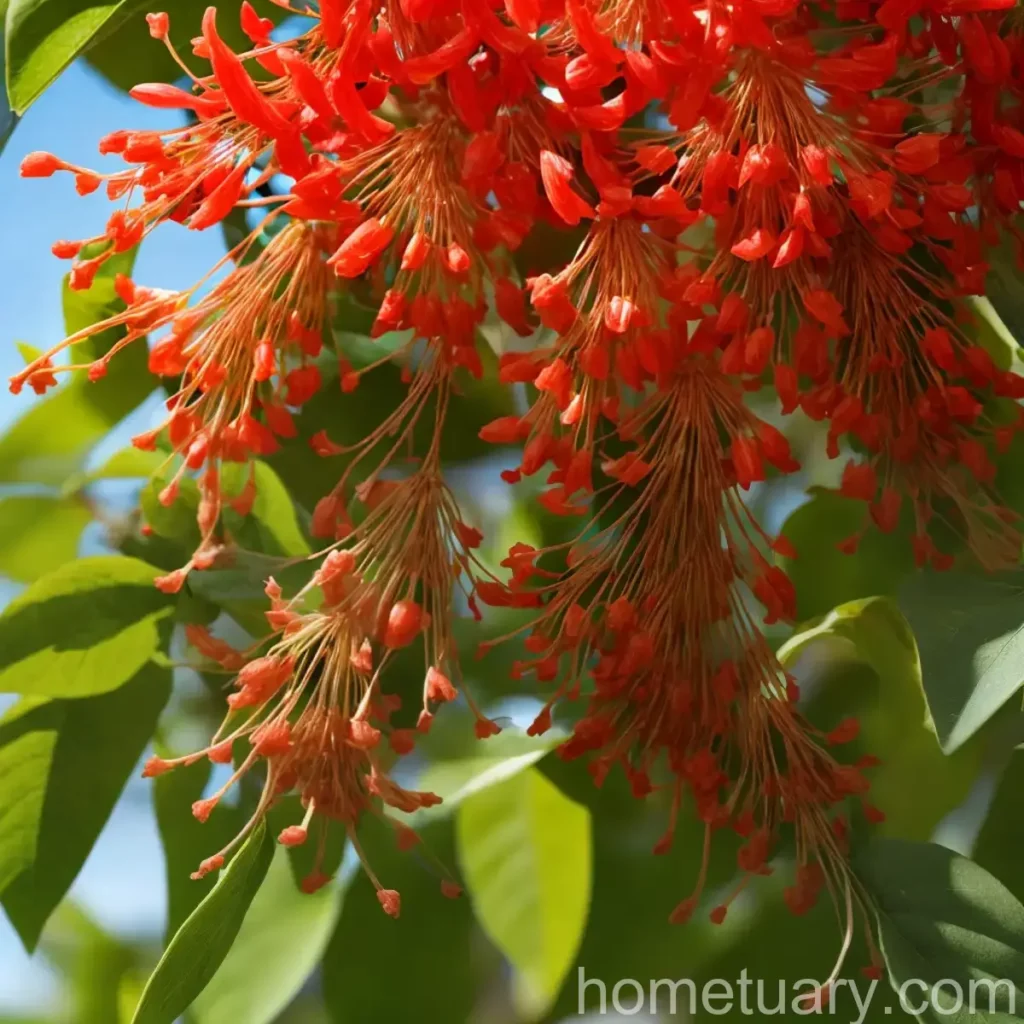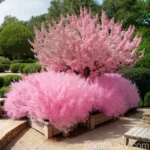French Honeysuckle (Hedysarum coronarium): A Comprehensive Guide
French honeysuckle, scientifically known as Hedysarum coronarium, is a stunning flowering plant that has gained popularity not only for its beauty but also for its various uses and benefits. This plant is cultivated for its ornamental value, medicinal properties, and its ability to attract wildlife to gardens. In this article, we will delve into the culture, uses, care requirements, propagation, diseases, and more about the French honeysuckle.
What is French Honeysuckle?
French honeysuckle, belonging to the Fabaceae family, is an herbaceous perennial plant native to the Mediterranean region. It is known for its vibrant and eye-catching flowers, which make it a popular choice for ornamental gardens. The plant features clusters of pea-like flowers that come in various colors, adding splashes of beauty to any landscape where they are grown. French honeysuckle is also valued for its ability to fix nitrogen in the soil, making it a beneficial plant for enhancing soil fertility.
Key Takeaways
Before we dive deeper into the details, here are the key takeaways about French honeysuckle:
- Botanical Name: Hedysarum coronarium
- Family: Fabaceae
- Common Name: French honeysuckle
- Native Habitat: Mediterranean region
- Uses: Ornamental, medicinal, wildlife attraction
- Cultural Requirements: Well-draining soil, full sunlight, moderate water, and occasional pruning
- Propagation: Seeds, division
- Common Diseases: Powdery mildew, rust
- Common Pests: Aphids, spider mites
- Special Characteristics: Nitrogen-fixing, vibrant flowers
- Hardiness Zone: 4-8
Now, let’s explore the various aspects of growing and caring for French honeysuckle.
Culture
Water
French honeysuckle generally requires moderate water, especially during dry spells or periods of drought. It is essential to maintain consistent soil moisture, ensuring that the plant’s roots do not dry out. However, it is crucial to avoid overwatering, as this can lead to root rot and other fungal diseases.
Sunlight
For optimal growth and flower production, French honeysuckle thrives in full sunlight. It is recommended to provide at least 6-8 hours of direct sunlight per day to promote robust growth and abundant flowering. In regions with extremely hot summers, providing some protection from intense afternoon sun may be beneficial.
Fertilizer
While French honeysuckle is known for its ability to fix nitrogen in the soil, supplemental fertilization can be beneficial, particularly in nutrient-deficient soils. A balanced, slow-release fertilizer can be applied in spring to support healthy growth and prolific flowering. However, it is essential to avoid excessive fertilization, as this can lead to an abundance of foliage at the expense of flowers.
Soil
French honeysuckle thrives in well-draining, fertile soil. It adapts well to various soil types but prefers slightly alkaline to neutral pH levels. Amending the soil with organic matter, such as compost or well-rotted manure, can improve its structure and fertility. Additionally, ensuring good drainage is crucial to prevent waterlogging, which can be detrimental to the plant’s health.
Uses
French honeysuckle serves various purposes, making it a valuable addition to gardens and landscapes.
Ornamental
One of the primary uses of French honeysuckle is for ornamental purposes. Its vibrant and showy flowers add color and visual interest to gardens, making it ideal for borders, cottage gardens, and mixed perennial beds. Whether grown as a standalone specimen or in combination with other flowering plants, French honeysuckle contributes to the overall aesthetic appeal of the landscape.
Medicinal
In addition to its ornamental value, French honeysuckle has been traditionally used for its medicinal properties. The plant contains bioactive compounds that have been utilized in herbal remedies for various purposes, including treating respiratory ailments and promoting overall wellness. Additionally, research has shown the potential of certain compounds found in French honeysuckle for their antimicrobial and antioxidant properties.
Wildlife Attraction
French honeysuckle is known to attract and support wildlife, particularly pollinators such as bees and butterflies. The abundance of nectar-rich flowers provides a valuable food source for these beneficial insects, contributing to the overall health of the ecosystem. Furthermore, the plant’s nitrogen-fixing ability enhances soil fertility, creating a hospitable environment for a diverse range of flora and fauna.
Pruning
Pruning is an essential aspect of French honeysuckle care, helping to maintain its shape, promote flowering, and remove any dead or diseased growth. The plant can be pruned in late winter or early spring before the onset of new growth. It is advisable to cut back the previous year’s growth to encourage the development of new shoots and ensure a tidy appearance.
When pruning French honeysuckle, it is essential to use clean, sharp tools to make precise cuts without causing unnecessary damage to the plant. Removing dead or weak stems, as well as any crossed or congested growth, can improve air circulation and prevent the onset of diseases such as powdery mildew.
Propagation
French honeysuckle can be propagated through seeds or division, allowing gardeners to expand their plantings or share the beauty of this species with others.
Seeds
Collecting seeds from mature French honeysuckle plants can allow for the propagation of new specimens. Sowing the seeds in well-prepared seed-starting mix indoors, several weeks before the last spring frost date, can give them a head start in their growth. Once the seedlings have developed several sets of true leaves, they can be transplanted into larger containers or directly into the garden.
Division
Dividing mature French honeysuckle plants is another effective method of propagation. This process involves carefully lifting the plant from the ground and separating the clumps into smaller sections, each with a portion of the root system. These divisions can then be replanted in suitable locations, where they will establish and develop into new, flourishing plants.
Container Popularity
French honeysuckle’s stunning appearance and versatile uses have contributed to its popularity as a container plant. Whether grown in large pots on patios and balconies or as centerpiece plantings in container gardens, French honeysuckle adds a touch of elegance and color to outdoor spaces. Its ability to attract pollinators makes it an excellent choice for bringing life and movement to container gardens, enhancing their overall appeal.
Container Common Diseases
While French honeysuckle can thrive in containers, it is important to be aware of potential diseases that may affect the plant in this growing environment.
Disease Diagnosis
Common diseases that may affect French honeysuckle when grown in containers include powdery mildew and rust. Powdery mildew is characterized by the development of white, powdery patches on the leaves, stems, and flowers, potentially leading to a decline in plant health. Rust, on the other hand, manifests as orange or brown pustules on the underside of the leaves, often causing them to yellow and drop prematurely.
Common Pests
In addition to diseases, French honeysuckle in containers may also be susceptible to pests such as aphids and spider mites. These tiny insects can inhibit the plant’s growth and vitality if left unchecked. Regular monitoring and appropriate pest management practices, such as the use of insecticidal soaps or horticultural oils, can help control infestations and protect the plant from potential damage.
Botanist’s Tips
As a plant scientist with a deep appreciation for French honeysuckle, I have some tips to share for those looking to cultivate and care for this beautiful species:
- Incorporate French honeysuckle in wildlife-friendly gardens to attract pollinators and create a thriving ecosystem.
- When selecting a planting location, choose a site with good air circulation to minimize the risk of fungal diseases.
- Consider companion planting with other pollinator-attracting flowers to create a biodiverse and visually captivating garden space.
- Stay mindful of the plant’s watering needs, striking a balance to provide adequate moisture without leading to waterlogged conditions.
- Regularly inspect the plant for signs of pests and diseases, intervening promptly to prevent their spread and minimize potential damage.
Fun Facts
To further appreciate the allure of French honeysuckle, here are some fun and intriguing facts about this captivating plant:
- French honeysuckle flowers exhibit a wide range of colors, including shades of pink, red, and white, adding diversity to garden landscapes.
- The plant’s ability to fix nitrogen contributes to the improvement of soil fertility and supports the growth of neighboring plants.
- French honeysuckle has been used in traditional herbal medicine for its therapeutic properties, offering a natural approach to wellness.
- The fragrance of French honeysuckle flowers can fill the air with a sweet, inviting scent, enhancing the sensory experience of a garden.
Links to External Resources
For further information and resources on French honeysuckle, I recommend exploring the following links:
- The Royal Horticultural Society – Hedysarum coronarium
- University of California – French Honeysuckle
- Missouri Botanical Garden – Hedysarum coronarium
In conclusion, French honeysuckle (Hedysarum coronarium) is a versatile and captivating plant that offers a host of benefits, from its ornamental beauty to its ecological contributions. By understanding its cultural requirements, uses, propagation methods, and more, gardeners can appreciate and harness the full potential of this remarkable species in their gardens and landscapes.
So, whether you are drawn to its vibrant flowers, intrigued by its medicinal properties, or inspired by its role in supporting wildlife, French honeysuckle stands out as a perennial favorite in the world of ornamental and beneficial plants.
References
- E. M. Gettys, and M. D. Casler. “French honeysuckle (Hedysarum coronarium L.) response to planting time and cutting management: Biomass yield, forage quality, and persistence.” Field Crops Research, Volume 211, 2017, pp 55-61. doi: https://doi.org/10.1016/j.fcr.2017.05.010
- M. Landoni, M. Chiodi, and C. Fontanesi “How does the floral structure of Hedysarum coronarium allow for reproductive success?” Plant Biology, Volume 21, Issue 5, 2019, pp 883-895. doi: https://doi.org/10.1111/plb.12999















